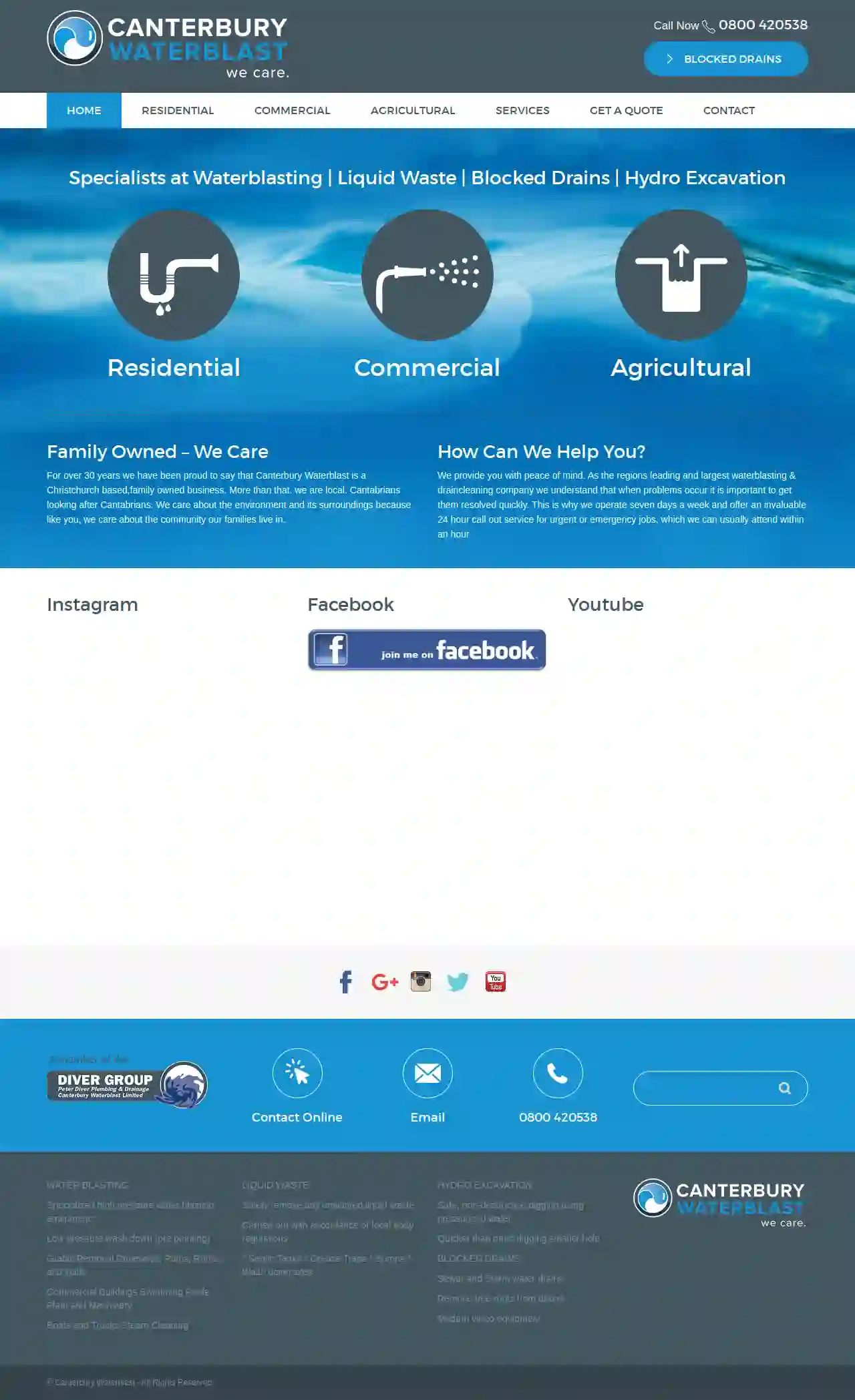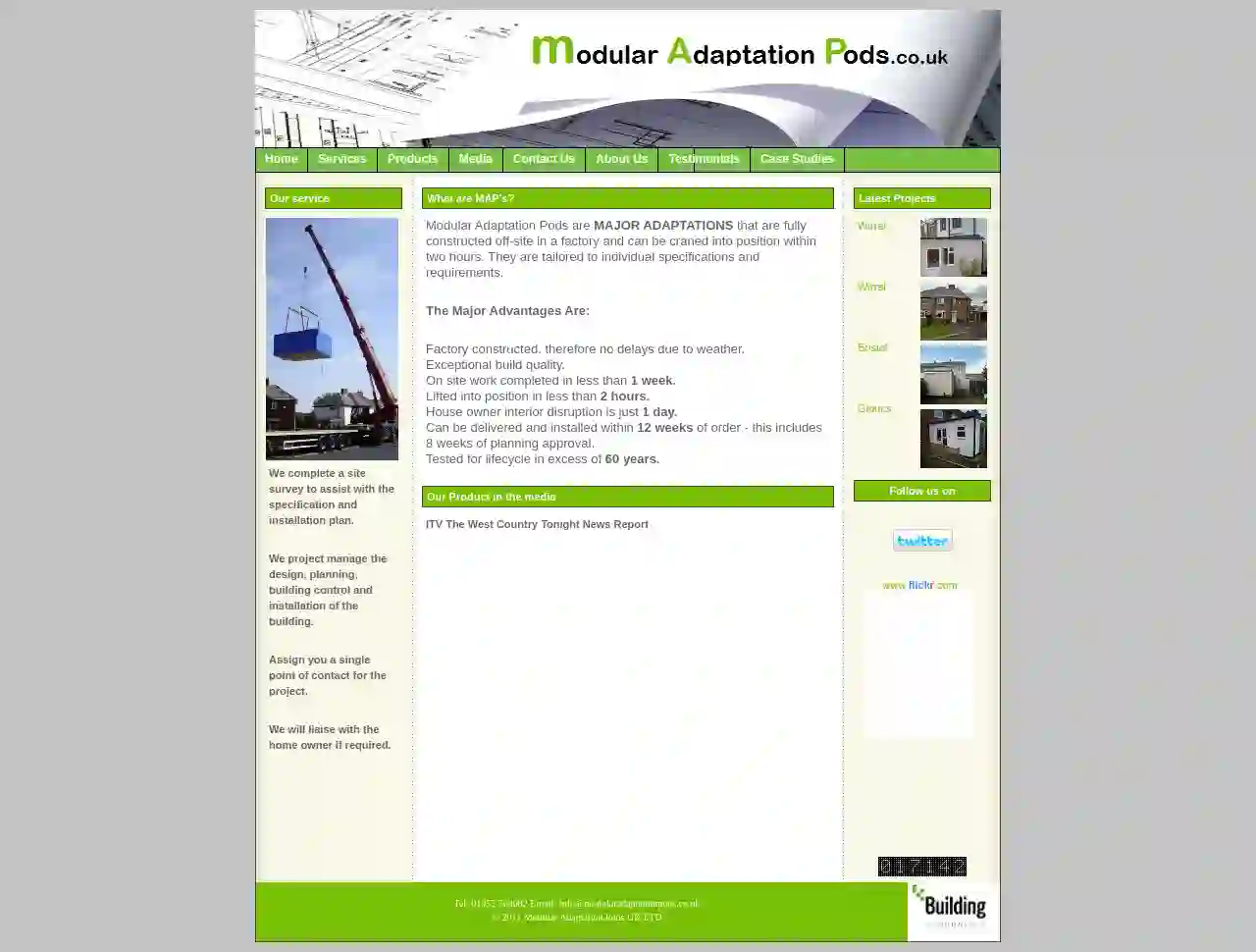Excavation Contractors Radcliffe
Find top Land Excavation in Radcliffe
Get up to 3 Excavating Contractor quotes for your project today! Compare profiles, reviews, accreditations, portfolio, etc... and choose the best offer.

Canterbury Waterblast
4.648 reviews44 Maces Road, Christchurch, New Zealand, GBCanterbury Waterblast: Your Trusted Partner for Waterblasting, Drain Clearing, and Hydro Excavation For over 30 years, Canterbury Waterblast has been a family-owned and operated business serving the Christchurch community. We are committed to providing our customers with the highest quality service and workmanship, ensuring their peace of mind. As the region's leading and largest waterblasting and drain cleaning company, we understand the importance of prompt and efficient solutions. That's why we operate seven days a week and offer a 24-hour call-out service for urgent or emergency jobs, typically arriving within an hour. We are proud to be Cantabrians looking after Cantabrians, and we care deeply about the environment and the community we live in. Our team is dedicated to providing environmentally responsible solutions, using state-of-the-art equipment and techniques to minimize our impact. At Canterbury Waterblast, we are committed to our customers and will travel just about anywhere in the South Island. Contact us today to discover why we are Canterbury's first choice for waterblasting, drain clearing, and hydro excavation.
- Services
- Why Us?
- Gallery
Get Quote- MG
MGF
4.49 reviewsBury, GB- Services
- Why Us?
Get Quote - K
K B Contracting & Quarries
4.818 reviewsBury, GB- Services
- Why Us?
Get Quote 
Suffolk Landscape Construction
1Pages Farm, Debenham Road, Debenham, IP14 6JZ, GBAbout us Based near the beautiful village of Debenham, Suffolk Landscape Construction Ltd was started in 2021 by good friends Josh McDonnell and Matthew Deeley who between them hold over 30 years experience in landscaping and groundworks. The company was set up with the goal of combining their shared experience and knowledge within the industry to build high quality, long lasting beautiful outdoor spaces for both private and commercial clients all over East Anglia. Over the last couple of years the company has grown into a well established multi-skilled team who all share the same passion for gardens and landscapes. At the heart Suffolk Landscape Construction is a driving want to provide excellent customer service to develop and create the spaces our clients desire. Working directly with clients or with designers for a bespoke, high quality service that will stand the test of time.
- Services
- Why Us?
- Testimonials
- Gallery
Get Quote
AS Carpentry & Developments Ltd
512 reviewsBury, GBIt’s who we are. It’s what we do. We Build Trust, & Construct Excellence AS Carpentry & Development Providing a range of building services from kitchen and bathrooms, extensions and conversions to complete new builds, we only work with highly trusted and experienced tradesmen registered with the appropriate bodies. AS Carpentry Development is proud to have earned a reputation for fast and efficient turnaround, reliability, transparency and professionalism. OUR SERVICES What We Offer & What We Do. A.S Carpentry and Developments are your local, reliable & recommended building company OUR VALUES Quality AS Carpentry and Development values delivering high-quality workmanship and materials in every project we undertake. Customer Satisfaction We are committed to ensuring our clients’ satisfaction by listening to
- Services
- Why Us?
- Testimonials
- Gallery
Get Quote- Wa
Walkers Building & Landscape
52 reviewsBury, GB- Services
- Why Us?
Get Quote - AT
ATF Hire Ltd
1Bury, GB- Services
- Why Us?
Get Quote 
Modular Adaptation Pods
1Bury, GBModular Adaptation Pods (MAPs) are a revolutionary solution for major home adaptations. MAPs are fully constructed off-site in a factory, ensuring exceptional build quality and minimal disruption to your home. They are tailored to individual specifications and requirements, offering a wide range of customization options. Our team of experts handles every aspect of the project, from initial site survey to final installation. We provide a single point of contact for seamless communication and project management. MAPs are designed to meet the needs of vulnerable individuals, helping them remain in their homes with dignity and independence. We are committed to providing a fast, efficient, and high-quality service that exceeds expectations. Our commitment to quality and customer satisfaction is reflected in our ISO9001 accreditation and Lifetime Homes standard compliance. We are proud to be a leading provider of major home adaptations, helping people live their best lives.
- Services
- Why Us?
- Accreditations
- Gallery
Get Quote- So
Southern Touch Excavation & Landscapes
1Bury, GB- Services
- Why Us?
Get Quote - No
Northmoor Farm Civils and Construction
1Bury, GB- Services
- Why Us?
Get Quote
Over 11,537+ Excavation Companies in our network
Our excavation companies operate in Radcliffe & surroundings!
ExcavationHQ has curated and vetted Top Excavation Contractors in and around Radcliffe. Find the most trustworthy pro today.
Frequently Asked Questions About Excavation Contractors
- Project Size and Scope: Larger, more complex excavations naturally take longer.
- Soil Conditions: Rocky or challenging soil types can slow down progress.
- Site Accessibility: Limited access might require more time for maneuvering equipment and hauling materials.
- Weather: Inclement weather can cause delays.
- Permitting and Inspections: Waiting for permits or inspections can extend the timeline.
- Clearly Define the Scope: Outline the project's goals, including the excavation area, depth, grade, and intended use.
- Obtain Necessary Permits: Research and acquire any required permits from your local authorities.
- Mark Utility Lines: Contact your utility companies to locate and mark underground utilities to prevent damage.
- Communicate with Neighbors: Inform your neighbors about the project's timeline and potential noise or disruptions.
- Prepare the Site: Clear any obstacles, such as vegetation, furniture, or structures, from the excavation area.
- Discuss Safety Protocols: Review safety procedures with the contractor to ensure a safe work environment.
How long does an excavation project take?
What is the difference between cut and fill excavation?
Cut: Involves excavating soil from an area where the existing grade is higher than the desired grade.
Fill: Refers to using the excavated soil ('cut' material) to raise the grade in an area where the existing grade is lower than desired.
This method minimizes the need to import or export soil, reducing costs and environmental impact. It's commonly used for site preparation, road construction, and landscaping.
What should I do before excavation starts?
What is the difference between topsoil and subsoil?
Topsoil: The uppermost layer, typically rich in organic matter, nutrients, and microorganisms. It's essential for plant growth and is often darker in color.
Subsoil: The layer beneath the topsoil, containing less organic matter and generally denser. It provides support for roots but is less fertile than topsoil.
During excavation, topsoil is often removed and preserved separately for later use in landscaping, while subsoil is typically used for backfilling or other less demanding applications.
How long does an excavation project take?
- Project Size and Scope: Larger, more complex excavations naturally take longer.
- Soil Conditions: Rocky or challenging soil types can slow down progress.
- Site Accessibility: Limited access might require more time for maneuvering equipment and hauling materials.
- Weather: Inclement weather can cause delays.
- Permitting and Inspections: Waiting for permits or inspections can extend the timeline.
What is the difference between cut and fill excavation?
Cut: Involves excavating soil from an area where the existing grade is higher than the desired grade.
Fill: Refers to using the excavated soil ('cut' material) to raise the grade in an area where the existing grade is lower than desired.
This method minimizes the need to import or export soil, reducing costs and environmental impact. It's commonly used for site preparation, road construction, and landscaping.
What should I do before excavation starts?
- Clearly Define the Scope: Outline the project's goals, including the excavation area, depth, grade, and intended use.
- Obtain Necessary Permits: Research and acquire any required permits from your local authorities.
- Mark Utility Lines: Contact your utility companies to locate and mark underground utilities to prevent damage.
- Communicate with Neighbors: Inform your neighbors about the project's timeline and potential noise or disruptions.
- Prepare the Site: Clear any obstacles, such as vegetation, furniture, or structures, from the excavation area.
- Discuss Safety Protocols: Review safety procedures with the contractor to ensure a safe work environment.
What is the difference between topsoil and subsoil?
Topsoil: The uppermost layer, typically rich in organic matter, nutrients, and microorganisms. It's essential for plant growth and is often darker in color.
Subsoil: The layer beneath the topsoil, containing less organic matter and generally denser. It provides support for roots but is less fertile than topsoil.
During excavation, topsoil is often removed and preserved separately for later use in landscaping, while subsoil is typically used for backfilling or other less demanding applications.